November 11, 2025
This document is a step-by-step guide to accessing the ECG databases hosted in the Enclave Platform when using the Windows 10 Enclave Virtual Desktop (VDI).
Prerequisites
- You should have completed the submission of the Access Request Form, and received confirmation that access to this repository has been granted.
- Access your Enclave Virtual Desktop as outlined in the following article: Get Started with Analytics Enclave
Instructions
- On the desktop, locate the icon for This PC and right click on it.
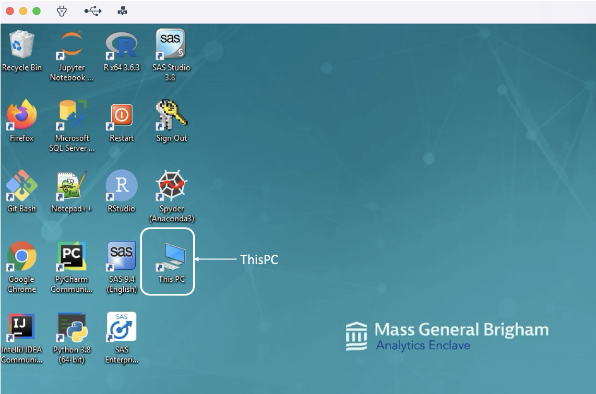
- From the drop down list, select Map network drive...
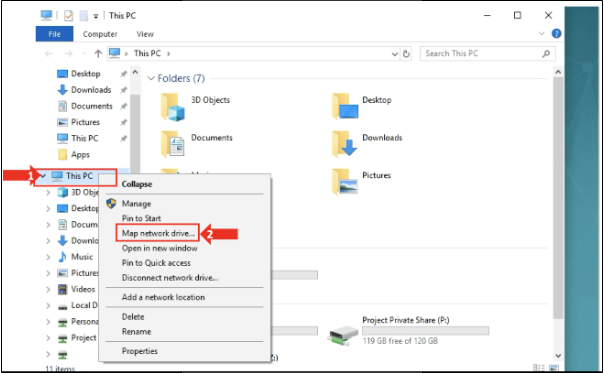
- Choose a Drive letter that you want to use to access ECGAdult ('X:' is selected in this example).
- Type in the file path \\files.analyticsenclave.org\ECGAdult to access the shared folder labelled ECGAdult.
- Generally, use two forward slashes "\\", followed by the server name "files.analyticsenclave.org" and then another forward slash "\", followed by the folder name.
- Similarly, type in the the file path \\files.analyticsenclave.org\ECGPedi to access the shared folder labelled ECGPedi.
- Click on Browse... to select the folder
- Check the box "Reconnect at sign-in" so that the shared file will always be available when you log on to the Enclave Virtual Desktop.
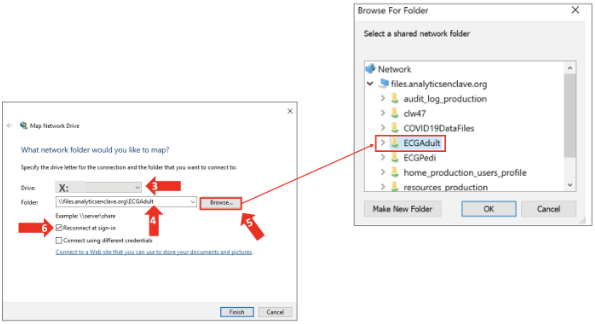
- Upon successful and complete mapping, you will see the respective folders as shown below. The folder will appear in the list of This PC’s resources.
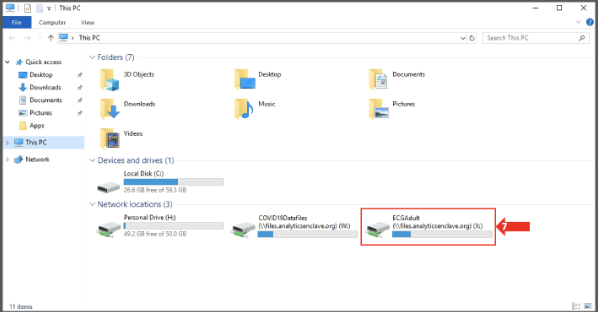
-
- Note: You will be alerted if you select a folder in which access has not been granted or a folder where access has been removed.
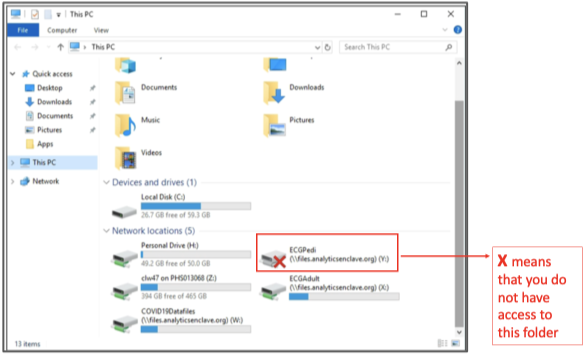
-
Working With ECG Data
-
Currently, we provide ECG data but do not always have specific tooling for its use.
The MUSE file format is described in the Documentation section of the ECG Data Dashboard. XML can be parsed with tools like Excel and the Python XML library both of which are available in the Analytics Enclave.
Example: How to acquire ECG data for a specific group of patients with designated MRNs and dates
- Using mapping files, narrow down the MRNs and dates (by R), to create a customized mapping file.
- Manually search for files based on centers and dates and transfer the identified files to a separate folder—a labor-intensive and time-consuming process, unless automated.
- Use the Power Query in Excel to merge the files and create the desired database.
Reference Materials
How to Create DataFrame in R (with Examples)
How to convert XML to a Python DataFrame
How to Import XML Files Into Excel and Format as a Table
How to use Excel's 'Get Data' function to import multiple files at once
WaveformECG - web-based tool for managing and analyzing ECG data*
FDAEcg Suite - advanced Viewer for resting ECGs in FDA HL7 XML format*
*currently not available in the Analytics Enclave
